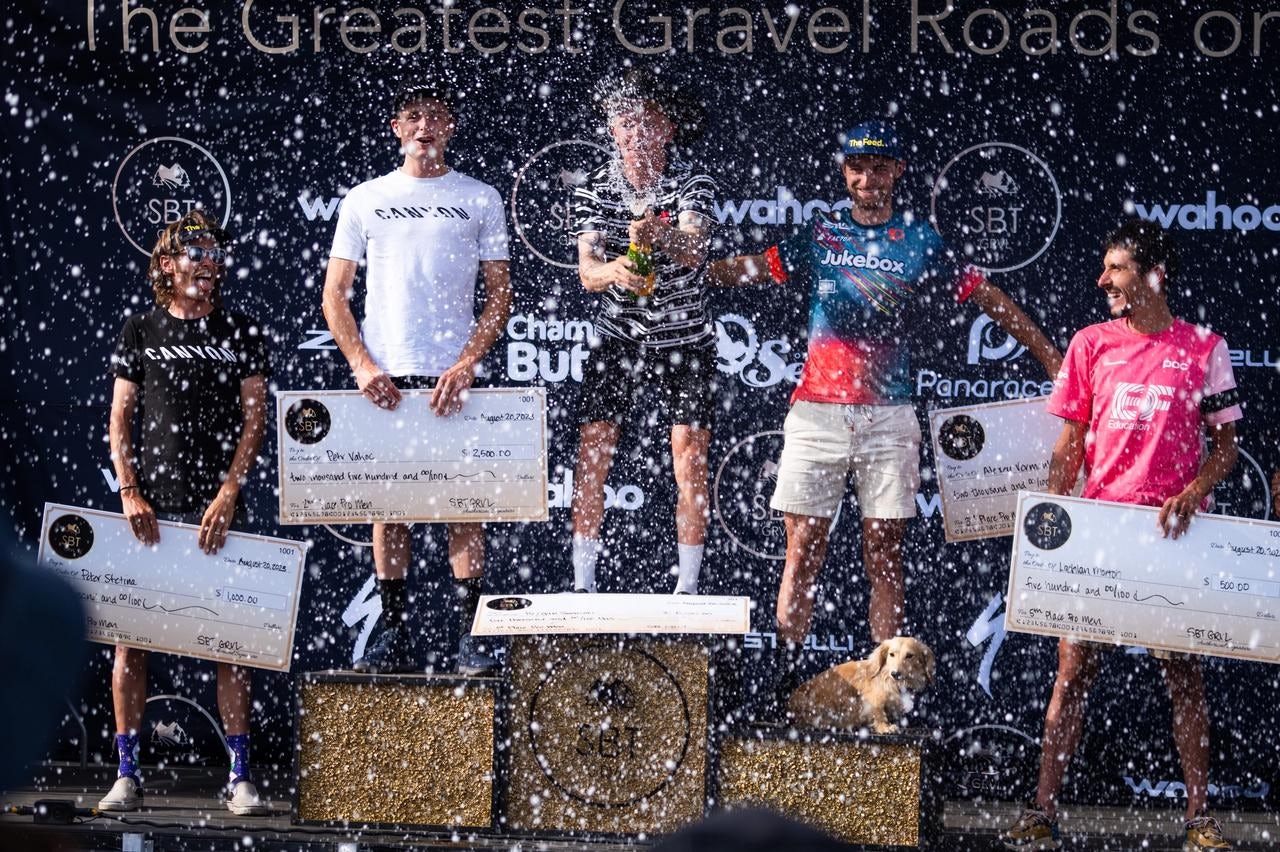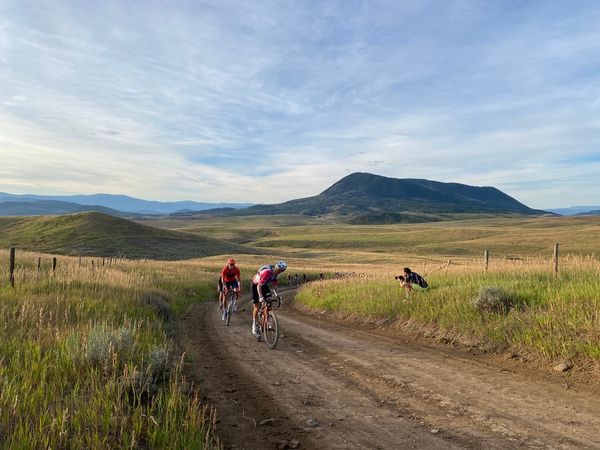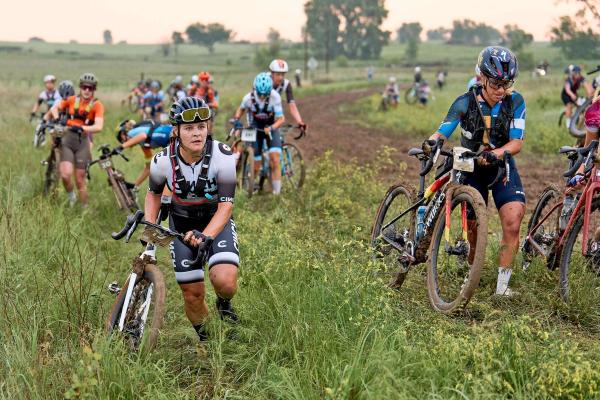Inside the race at SBT GRVL
We went to cover the SBT GRVL race in Steamboat Springs, Colorado. This is what it was like
Logan Jones-Wilkins
Junior Writer - North America
© Photo by Dave Sear courtesy of SBT GRVL
The exploits of the legends of cycling were often not televised.
Some were, since the days of Eddy Merckx the sport has been widely televised, but there are still moments that moving images do not capture. Andy Hampsten on the Gavia comes to mind. So too does Egan Bernal’s Dolomite solo in the 2021 Giro d'Italia. Most of all, the pre-war tales of the legends of yesteryears – Fausto Coppi and Gino Bartali – were consumed not through televisions, but instead through the papers.
Yet, these days in cycling the races are almost always on-demand. All of the biggest races, and even many of the smaller ones, are available to watch live.
Professional racing, now, is almost synonymous with what is available to stream. If it can’t be shown live, the exposure and return on investment is at a different level. Yet, there are still events beyond the purview of what is televised that are becoming extremely professional: both in terms of funds and in terms of wattage. One of these events is SBT GRVL.
What is SBT GRVL?

© Photo by Dave Sear
The group en masse on the first gravel rollers
SBT GRVL is a relatively new race on the block with its first edition in 2019. Since then it has quickly grown into one of the marquee brands of the sport and attracts some of the largest starting fields of any race in the world. With courses ranging from a manageable 25 miles, to the full course of 142 miles of the “champagne of gravel,” SBT takes full advantage of the variety of terrain around the ski resort of Steamboat Springs in northern Colorado. While the gravel may be largely smooth, the race is still one of the most brutal tests in the country and has become one of the most important days in the country for those who make a living racing bikes in the United States.
This year, more than ever, the competition is starting to live up to the standard of professional cycling that is immortalised on the televisions of cycling's global following. While it is unlikely that SBT will ever be akin to the professionalism of the Tour of Flanders or Paris Roubaix – the remote mountainous terrain that makes it so special also makes televising it so difficult – it is becoming an event that is of undeniable importance now that racers put so much into the race and the level is so high.

© Photo by David Cronin
Lachlan Morton attacks off the front of the lead pack after a major regroup
With that prestige, however, has come a spectacle that is extraordinary and speaks to the same thrills and interests that make road racing appealing. The problem? Only a small handful of people were able to watch it. The rest of the world would need to take our word for it and take in the race through the photos and testimonies of the riders themselves. Here at Steamboat, the racers made a case for why you should:
Chasing the race
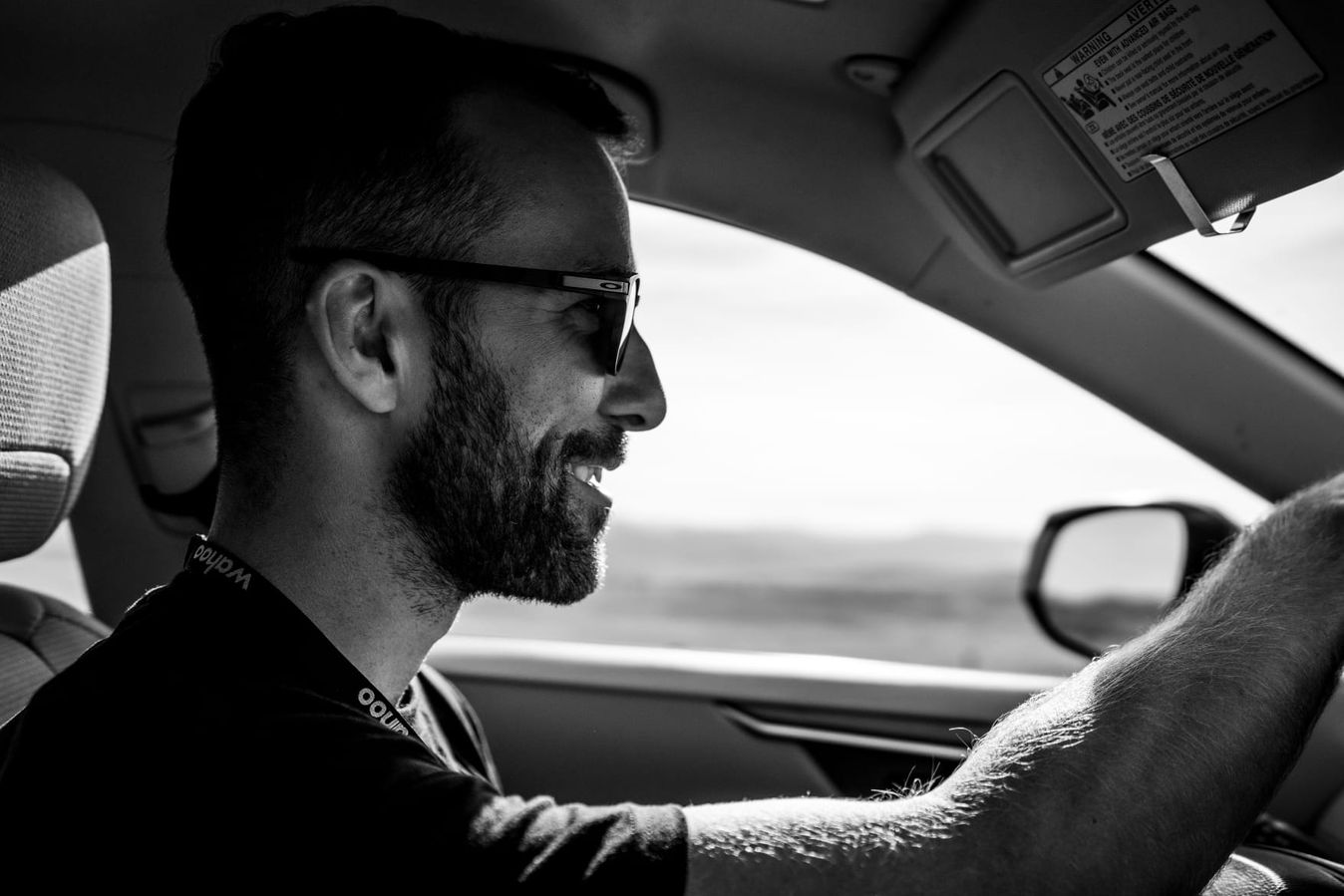
© Photo by Daghan Perker
This is Bruce Dalton, the director of the media operation at SBT. He also drives like a former motocross rider: fast, even in a RAV4
SBT has a grown-up operation. With the demands of the sprawling nature of the course, the lack of any actual road closures – all American gravel races run on “open roads” since the costs of road closures in the US is prohibitively high – and the lack of standard television coverage capabilities, there is a race around the race to provide any visual and journalistic coverage of the event.
A slew of media cars and motorbikes shuttle journalists, photographers and brand reps around the course to cover the action. With a staple of gravel courses being cyclocross or mountain-bike type elements as well, that following plan criss-crosses and runs around the periphery of the course in fits and starts, with only short windows into the racing action available for the media.
Furthermore, the cars have to pick the race to follow, with the men’s and women’s field going off at the same time. With the men finishing first, to do inclusive coverage of the event there is a need to be with the men at the front of the field and gather the details at the end. Unless there are multiple cars, or the coverage goals are more diminished, it is the only way to see the action.
Even so, the process of covering simply the men’s leading group or two is a frenzied chore filled with lots of moving, not a lot of clarity and incredibly fast driving on very loose gravel.
The content frenzy
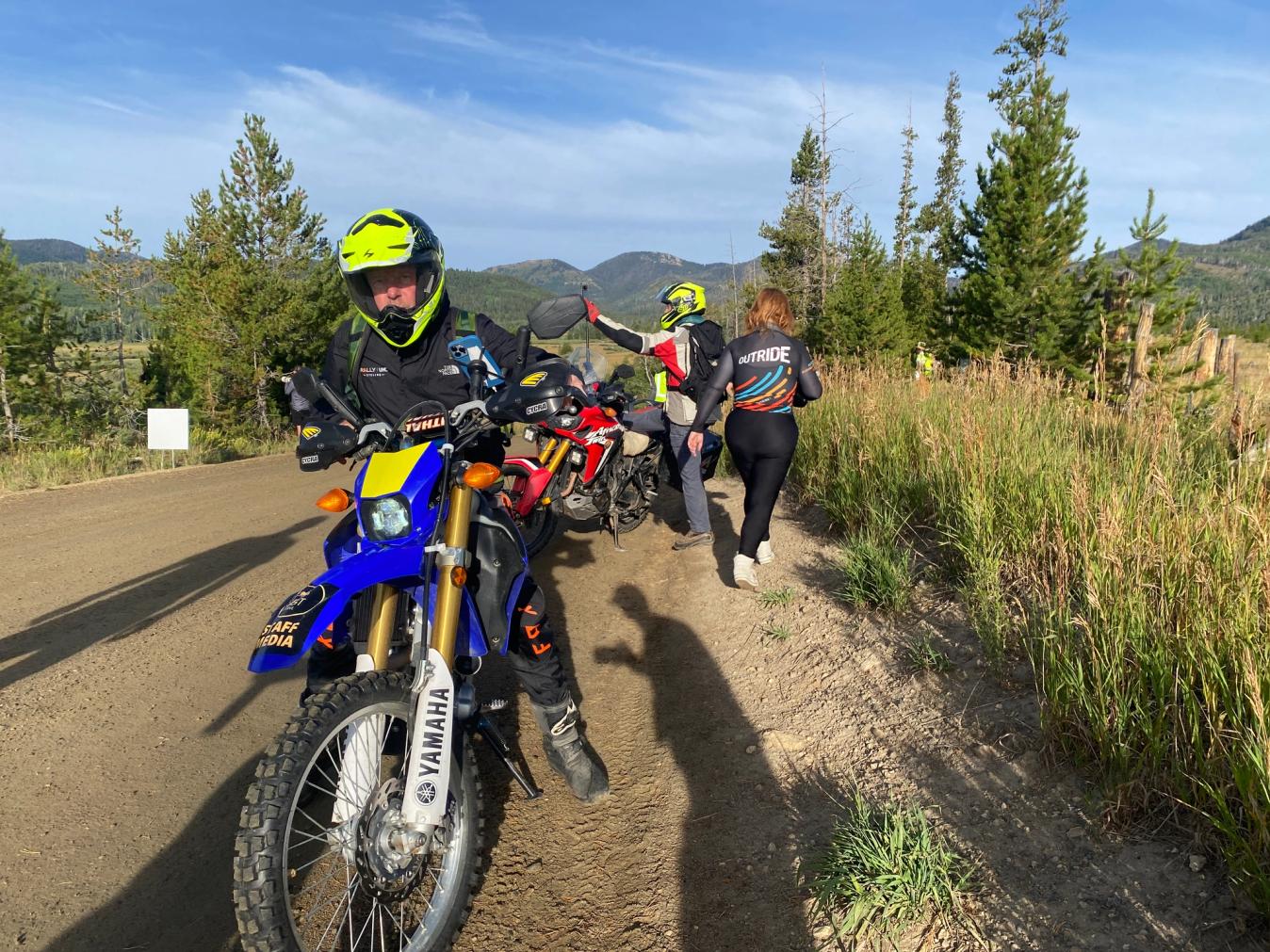
© Photo by Logan Jones-Wilkins
The photographers photographed. The blue bike is that of Wil Matthews, one of the most prolific cycling photographers in the US
At each stop, the cars would pull over and those covering the race would pour out onto a particularly scenic dirt spot. The still photographers and videographers would scramble down the road, into the woods, or out into the fields around the course to get their angle or find their light. Sometimes they would yell at others to clear their shot, the nice ones would readjust. Compared to the races like the Tour of Flanders or the Tour de France, SBT GRVL is the happiest of hunting grounds. But clear shots are still hard to come by.
Then there is the wait, sometimes seconds, other times minutes, before the riders would clatter into view. Each time the riders would pass, those journalists not confined to a viewfinder would look closely at each passing kit and each gurning face to find the nuance of the efforts. Who looks good, who seems to be patient, who is turning the screws, what possible dynamics will unfold ahead.
While the whole sport is changing rapidly, the players are fairly easy to follow and generally the contenders are the same. If someone breaks into that cohort, often they are a big name from another discipline. Petr Vakoč, for example, was new to the American gravel scene this year and excelled at Unbound Gravel and SBT GRVL this summer. Yet he is not new to cycling, with a previous career on the WorldTour with Quick-Step. When his number popped up on the start list, it was easy to slot him in amongst the expected contenders and think through the ways in which he could win the race.
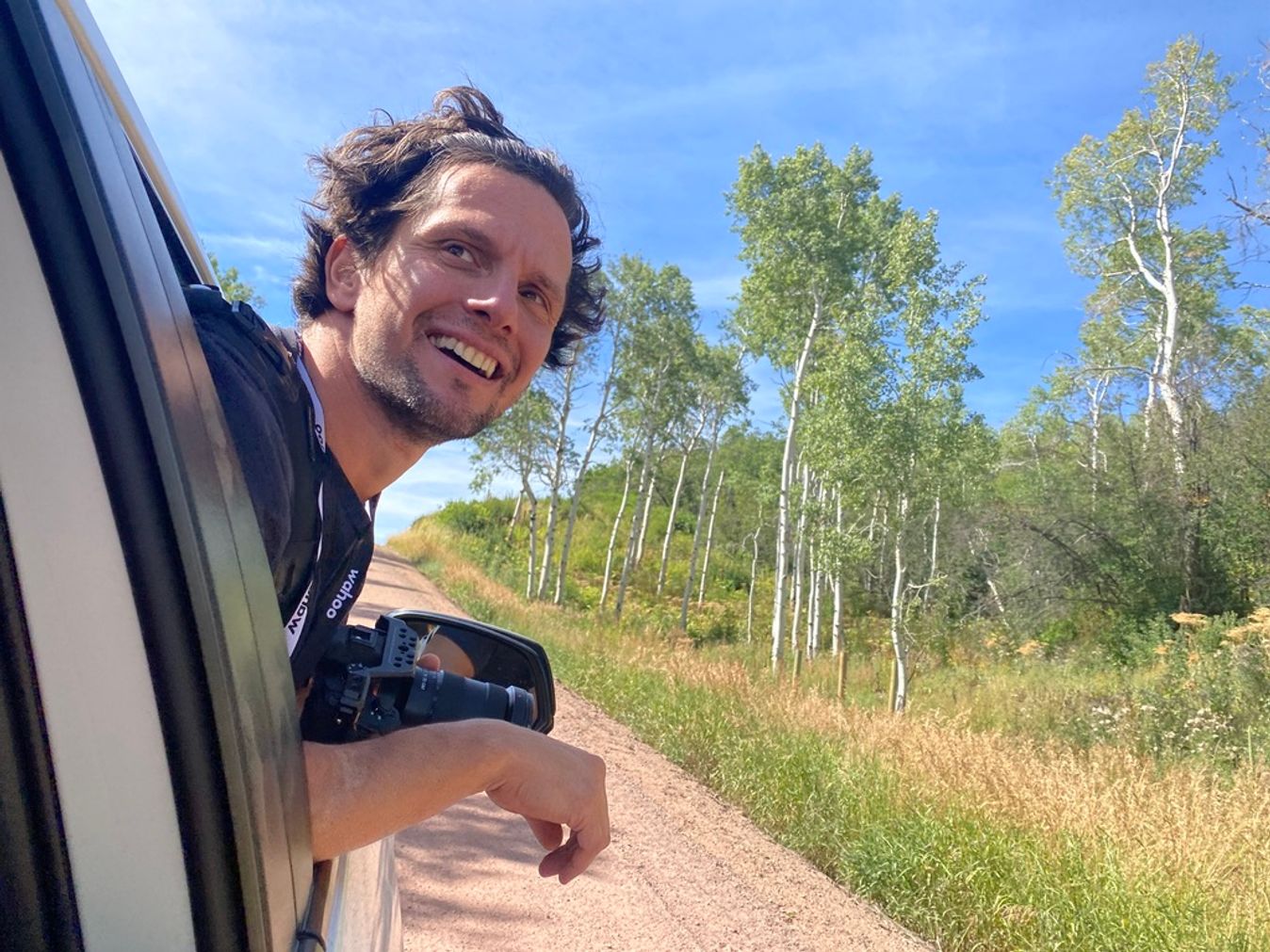
© Photo by Logan Jones-Wilkins
Deghan Perker hanging out the window of the car to get his shot
After each passing, the car crews scramble back inside and speed off to the next spot. At SBT, this means often overtaking the riders that you just stopped to cover, each time giving the photographers the chance to lean out of the window and get the action shots. Then it would be full speed ahead until the next rendezvous.
Even though all the parties in each of the cars have different priorities, the cars are piloted by the organisation through a detailed content plan that moves the multiple vehicles and dirt bikes around the course in the most efficient way, guaranteeing the most possible access. The race is not between the cars, it's between the cars and the riders spread throughout the hot high-altitude fields and forests of the gentle Park Range.
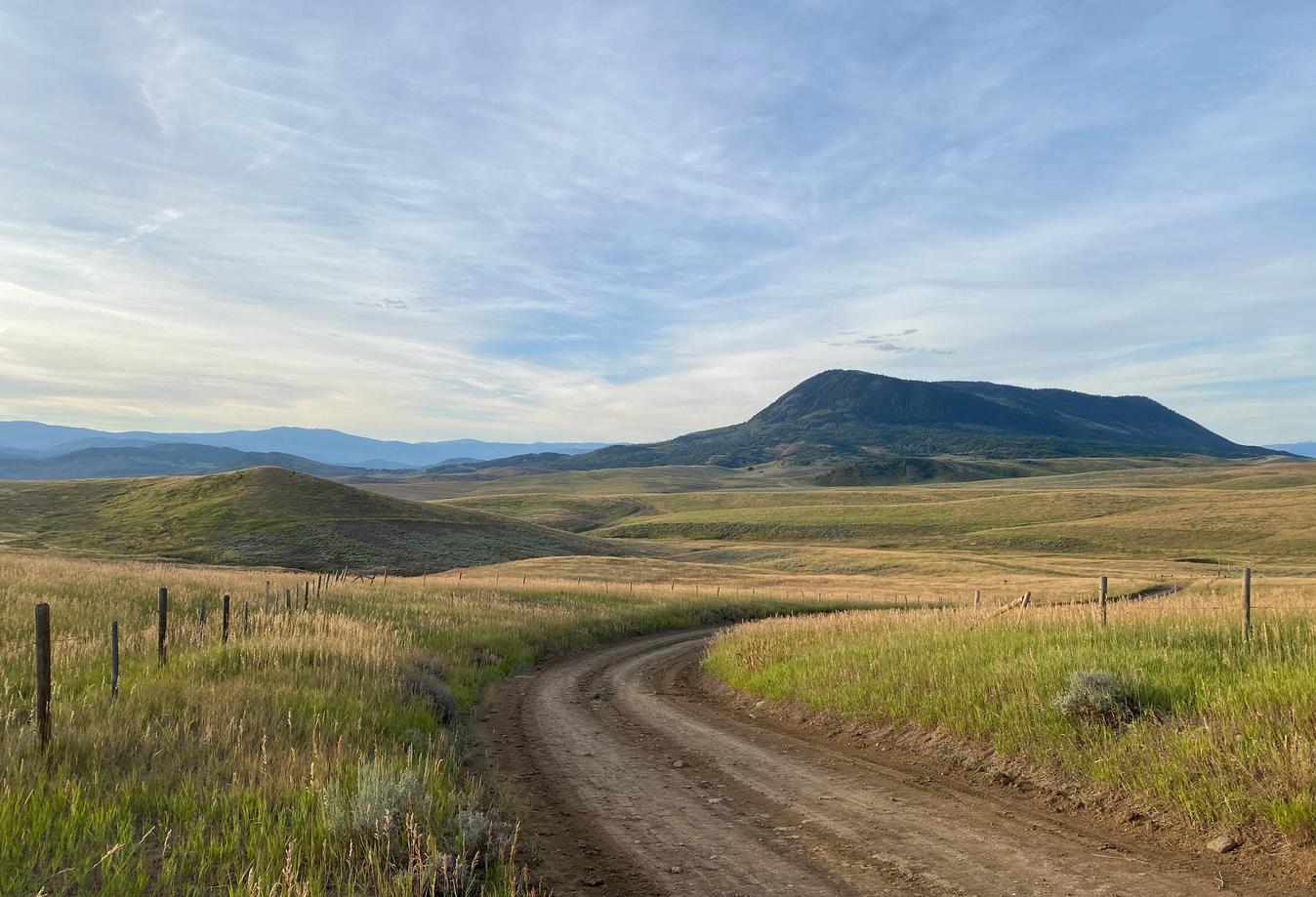
© Photo by Logan Jones-Wilkins
Even without the race, the early morning wake-up call would have been worth it for the stunning terrain around Steamboat
How the race played out
In the six hours of the men’s race that was won by Keegan Swenson, in a course record time, the amount that other people saw was a matter of minutes. Some of the motorbikes may have had a bit more time, but largely the media just saw snippets. What we did see was the moment he pulled the winning move clear of all but three of his competitors – Alexey Vermeulen, Petr Vakoč and Adam Roberge. The group of 20 leaders was together into the long gradual climb before the indomitable Swenson kicked away from the group and 16 riders couldn’t react.
The process to get rid of the last three took a bit longer, but once there were only four riders out front, and given the strength of Swenson’s season with records throughout, there seemed to be only one option.
In the women’s race, the battle was tighter, with Sofia Gomez Villafañe taking the win after a long day's battle with Alexis Skarda and Tiffany Cromwell. We delved into the full race report, with interviews from the maybe players, but it was, like the men’s race, the most anticipated outcome in a very dynamic seven hours of racing.

© Photo by Joshua Strong courtesy of SBT GRVL
Lachlan Morton found the river to cool off after his race
But SBT, like all gravel events, is beyond just the result sheets and play-by-play found in a race report. As we discussed above, the operation that goes into capturing the racing is only ever good enough for part of the story. The rest is in the minds and relationships of the riders. Yet, it is important nonetheless because anyone can do these events, and if you want to do them, it pays to see what people at the cutting edge are capable of.
While Keegan Swenson and Sofia Gomez Villafañe may not be like Coppi and Bartali in most ways, there is still worthwhile wonder in what isn't seen, nonetheless.
